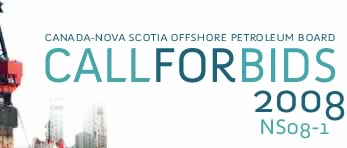



Exploration Potential
The plays on this parcel are the seismically-defined structures and reservoir facies of the carbonate reef margin of the Jurassic Abenaki formation. This reef margin play is directly analogous to the Deep Panuke discovery (mean OGIP 1 Tcf), located approximately 170 km northeast of the parcel along the same Abenaki carbonate bank trend. The Albatross B-13 well, located 25 km west of the parcel, encountered evidence of significant fracturing, dolomitization and a few modest mud-gas shows. Within Deep Panuke, such fractures are believed to have been the main conduits by which hot, deep basinal fluids travelled to leach and dolomitize the limestones and create / enhance the formation’s porosity. Later, gas is believed to have used these faults / fractures as migration pathways to fill the new reservoirs. Several salt-cored structures are observed in deep water outboard of the Jurassic carbonate margin that could have overlying deep water carbonate or draped clastic reservoir facies such as fans, debris flows, turbidites, etc. Seismic profiles and related details of the numerous Abenaki-related structures and play types can be found in the 2005 CNSOPB report The Upper Jurassic Abenaki Formation Offshore Nova Scotia: A Seismic and Geologic Perspective.
Tertiary age turbidite fan complexes may also be present on the parcel. Although Torbrook C-15 was unsuccessful, the resultant data and knowledge could be used to identify Tertiary turbidite fans on the parcel. In the adjacent licence (EL 2407), the interest owner has publicly stated that they have identified and delineated two large prospects: a pair of stacked Tertiary deep water fan complexes and a large detached slide block from the Jurassic carbonate reef margin. Both of these prospects are located in deep water on the Scotian Slope. Seismic examples and details on Tertiary deep water plays are available in the 2007 CNSOPB report Nova Scotia Deepwater Post-Drill Analysis 1982-2004.